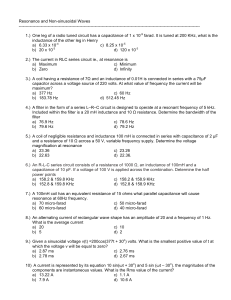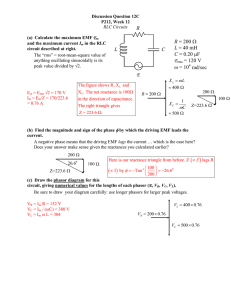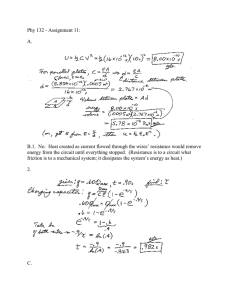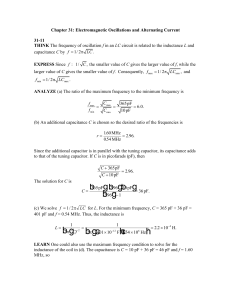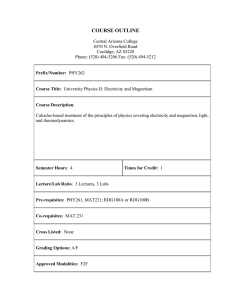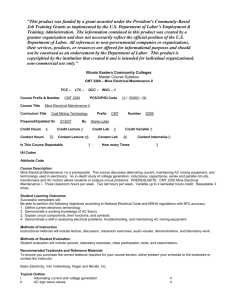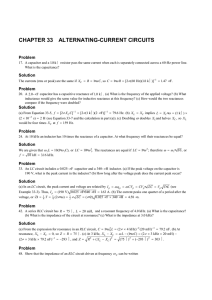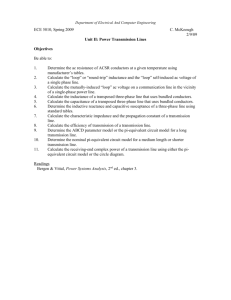A radio receptor is often disrupted by 8 kHz noise.
advertisement
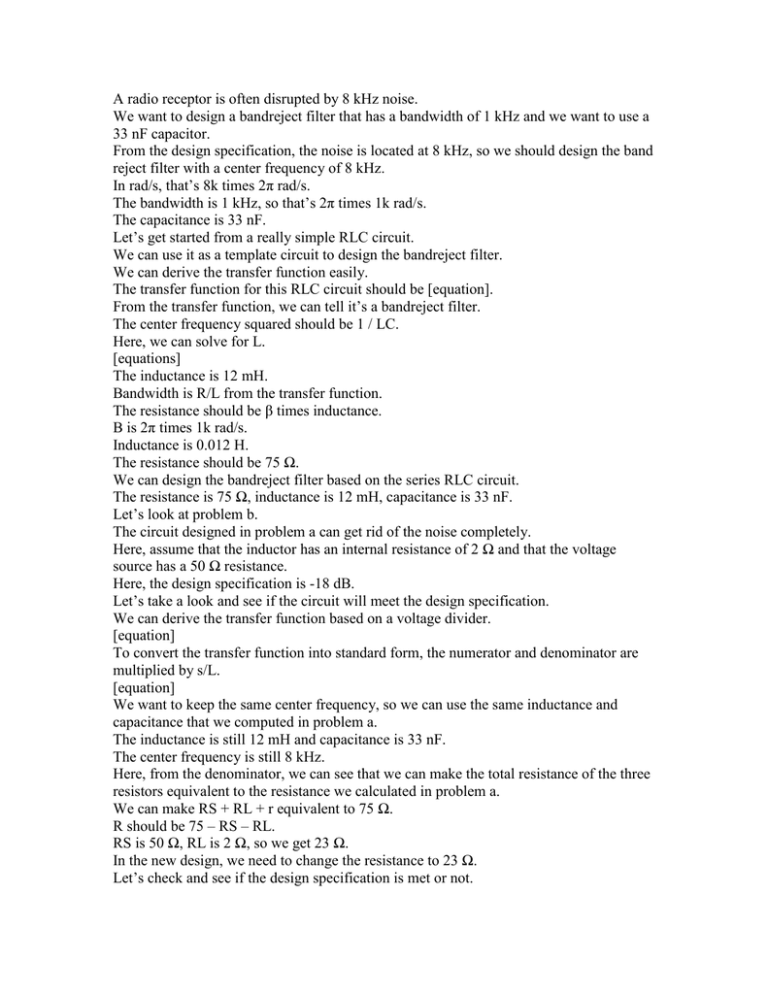
A radio receptor is often disrupted by 8 kHz noise. We want to design a bandreject filter that has a bandwidth of 1 kHz and we want to use a 33 nF capacitor. From the design specification, the noise is located at 8 kHz, so we should design the band reject filter with a center frequency of 8 kHz. In rad/s, that’s 8k times 2π rad/s. The bandwidth is 1 kHz, so that’s 2π times 1k rad/s. The capacitance is 33 nF. Let’s get started from a really simple RLC circuit. We can use it as a template circuit to design the bandreject filter. We can derive the transfer function easily. The transfer function for this RLC circuit should be [equation]. From the transfer function, we can tell it’s a bandreject filter. The center frequency squared should be 1 / LC. Here, we can solve for L. [equations] The inductance is 12 mH. Bandwidth is R/L from the transfer function. The resistance should be β times inductance. Β is 2π times 1k rad/s. Inductance is 0.012 H. The resistance should be 75 Ω. We can design the bandreject filter based on the series RLC circuit. The resistance is 75 Ω, inductance is 12 mH, capacitance is 33 nF. Let’s look at problem b. The circuit designed in problem a can get rid of the noise completely. Here, assume that the inductor has an internal resistance of 2 Ω and that the voltage source has a 50 Ω resistance. Here, the design specification is -18 dB. Let’s take a look and see if the circuit will meet the design specification. We can derive the transfer function based on a voltage divider. [equation] To convert the transfer function into standard form, the numerator and denominator are multiplied by s/L. [equation] We want to keep the same center frequency, so we can use the same inductance and capacitance that we computed in problem a. The inductance is still 12 mH and capacitance is 33 nF. The center frequency is still 8 kHz. Here, from the denominator, we can see that we can make the total resistance of the three resistors equivalent to the resistance we calculated in problem a. We can make RS + RL + r equivalent to 75 Ω. R should be 75 – RS – RL. RS is 50 Ω, RL is 2 Ω, so we get 23 Ω. In the new design, we need to change the resistance to 23 Ω. Let’s check and see if the design specification is met or not. At the center frequency, the magnitude of the transfer function, that is, from the transfer function we can see that when the frequency is 1 over the square root of LC, (jω0)^2 should be –(ω0)^2. That is -1/LC. It’s going to cancel 1/LC in the numerator and denominator. The transfer function magnitude will just be the first-order coefficient ratio. [equation] We get 0.0267. In dB, we take 20 log base 10 of 0.0267. That is -31.5 dB. It is lower than -18 dB, so the design specification is met.
